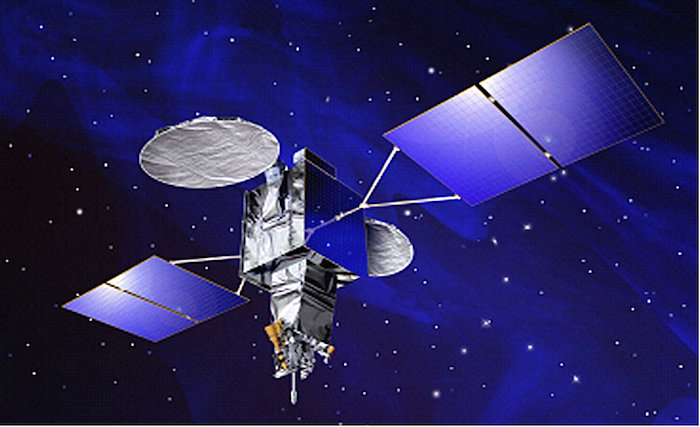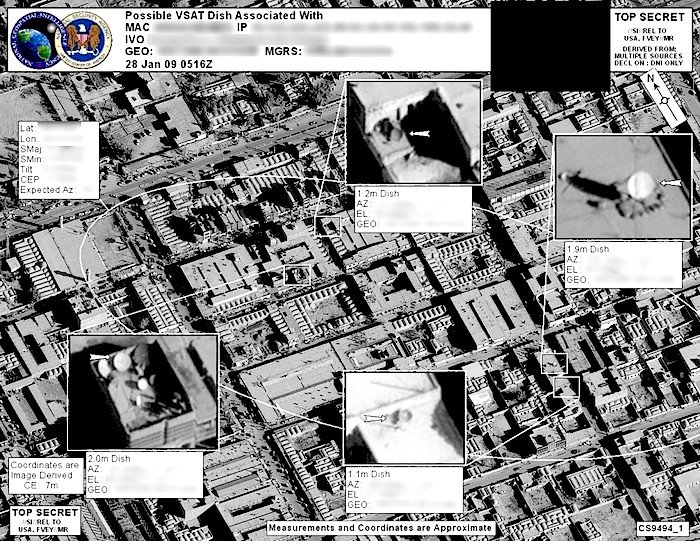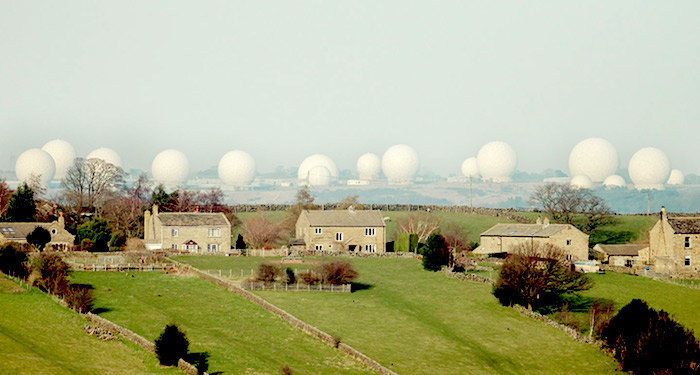Once known only by the code name Field Station 8613, the secret base — now called Menwith Hill Station — is located about nine miles west of the small town of Harrogate in North Yorkshire. Originally used to monitor Soviet communications through the Cold War, its focus has since dramatically shifted, and today it is a vital part of the NSA's sprawling global surveillance network.
For years, journalists and researchers have speculated about what really goes on inside Menwith Hill, while human rights groups and some politicians have campaigned for more transparency about its activities. Yet the British government has steadfastly refused to comment, citing a longstanding policy not to discuss matters related to national security.
Now, however, top-secret documents obtained by The Intercept offer an unprecedented glimpse behind Menwith Hill's razor wire fence. The files reveal for the first time how the NSA has used the British base to aid "a significant number of capture-kill operations" across the Middle East and North Africa, fueled by powerful eavesdropping technology that can harvest data from more than 300 million emails and phone calls a day.
Over the past decade, the documents show, the NSA has pioneered groundbreaking new spying programs at Menwith Hill to pinpoint the locations of suspected terrorists accessing the internet in remote parts of the world. The programs — with names such as GHOSTHUNTER and GHOSTWOLF — have provided support for conventional British and American military operations in Iraq and Afghanistan. But they have also aided covert missions in countries where the U.S. has not declared war. NSA employees at Menwith Hill have collaborated on a project to help "eliminate" terrorism targets in Yemen, for example, where the U.S. has waged a controversial drone bombing campaign that has resulted in dozens of civilian deaths.
The disclosures about Menwith Hill raise new questions about the extent of British complicity in U.S. drone strikes and other so-called targeted killing missions, which may in some cases have violated international laws or constituted war crimes. Successive U.K. governments have publicly stated that all activities at the base are carried out with the "full knowledge and consent" of British officials. The revelations are "yet another example of the unacceptable level of secrecy that surrounds U.K. involvement in the U.S. 'targeted killing' program," Kat Craig, legal director of London-based human rights group Reprieve, told The Intercept. ...
The equipment at Menwith Hill covers roughly one square mile, which is patrolled 24 hours a day by armed British military police and monitored by cameras perched on posts that peer down on almost every section of the 10-foot perimeter fence.
Most visible from the outside are a cluster of about 30 of the giant white domes. But the site also houses a self-contained community, accessible only to those with security clearance. Among operations buildings in which analysts listen in on monitored conversations, there is a bowling alley, a small pool hall, a bar, a fast food restaurant, and a general store.
Most of the world's international phone calls, internet traffic, emails, and other communications are sent over a network of undersea cables that connect countries like giant arteries. At spy outposts across the world, the NSA and its partners tap into these cables to monitor the data flowing through them. But Menwith Hill is focused on a different kind of surveillance: eavesdropping on communications as they are being transmitted through the air.
According to top-secret documents obtained by The Intercept from NSA whistleblower Edward Snowden, Menwith Hill has two main spying capabilities. The first is called FORNSAT, which uses powerful antennae contained within the golf ball-like domes to eavesdrop on communications as they are being beamed between foreign satellites. The second is called OVERHEAD, which uses U.S. government satellites orbiting above targeted countries to locate and monitor wireless communications on the ground below — such as cellphone calls and even WiFi traffic. ...

"The commercial satellite communication business is alive and well and bursting at the seams with increasingly sophisticated bulk DNI (Digital Network Intelligence) traffic that is largely unencrypted," the NSA reported in a 2006 document. "This data source alone provides more data for Menwith Hill analysts to sift through than our entire enterprise had to deal with in the not-so-distant past."
The U.S. and U.K. governments have actively misled the public for years through a "cover story."
As of 2009, Menwith Hill's foreign satellite surveillance mission, code-named MOONPENNY, was monitoring 163 different satellite data links. The intercepted communications were funneled into a variety of different repositories storing phone calls, text messages, emails, internet browsing histories, and other data.
It is not clear precisely how many communications Menwith Hill is capable of tapping into at any one time, but the NSA's documents indicate the number is extremely large. In a single 12-hour period in May 2011, for instance, its surveillance systems logged more than 335 million metadata records, which reveal information such as the sender and recipient of an email, or the phone numbers someone called and at what time.
To keep information about Menwith Hill's surveillance role secret, the U.S. and U.K. governments have actively misled the public for years through a "cover story" portraying the base as a facility used to provide "rapid radio relay and conduct communications research." A classified U.S. document, dated from 2005, cautioned spy agency employees against revealing the truth. "It is important to know the established cover story for MHS [Menwith Hill Station] and to protect the fact that MHS is an intelligence collection facility," the document stated. "Any reference to satellites being operated or any connection to intelligence gathering is strictly prohibited." ...
The documents obtained by The Intercept reveal that spy satellites operated at Menwith Hill today can target communications in China and Latin America, and also provide "continuous coverage of the majority of the Eurasian landmass," where they intercept "tactical military, scientific, political, and economic communications signals." But perhaps the most significant role the base has played in recent years has been in the Middle East and North Africa.
Especially in remote parts of the world where there are no fiber-optic cable links, it is common for internet connections and phone calls to be routed over satellite. Consequently, Menwith Hill became a vital asset in the U.S. government's counterterrorism campaign after the 9/11 attacks. Since then, the base has been used extensively to tap into communications in otherwise hard-to-reach areas where Islamic extremist groups such as al Qaeda and al Shabaab have been known to operate — for example, in the Afghanistan-Pakistan border region, Somalia, and Yemen.

The NSA's documents describe GHOSTHUNTER as a means "to locate targets when they log onto the internet." It was first developed in 2006 as "the only capability of its kind" and it enabled "a significant number of capture-kill operations" against alleged terrorists. Only a few specific examples are given, but those cases give a remarkable insight into the extraordinary power of the technology. ...
By 2008, the apparent popularity of GHOSTHUNTER within the intelligence community meant that it was rolled out at other surveillance bases where NSA has a presence, including in Ayios Nikolaos, Cyprus, and Misawa, Japan. The expansion of the capability to the other bases meant that it now had "near-global coverage." But Menwith Hill remained its most important surveillance site. "[Menwith Hill] still supplies about 99% of the FORNSAT data used in GHOSTHUNTER geolocations," noted a January 2008 document about the program.
A 2009 document added that GHOSTHUNTER's focus was at that time "on geolocation of internet cafés in the Middle East/North Africa region in support of U.S. military operations" and said that it had to date "successfully geolocated over 5,000 VSAT terminals in Iraq, Afghanistan, Syria, Lebanon, and Iran." VSAT, or Very Small Aperture Terminal, is a satellite system commonly used by internet cafés and foreign governments in the Middle East to send and receive communications and data. GHOSTHUNTER could also home in on VSATs in Pakistan, Somalia, Algeria, the Philippines, Mali, Kenya, and Sudan, the documents indicate. ...
[T]he lethal use of the surveillance data does not appear to have been restricted to conventional war zones such as Afghanistan or Iraq. The NSA developed similar methods at Menwith Hill to track down terror suspects in Yemen, where the U.S. has waged a covert drone war against militants associated with al Qaeda in the Northern Peninsula.
In early 2010, the agency revealed in an internal report that it had launched a new technique at the British base to identify many targets "at almost 40 different geolocated internet cafés" in Yemen's Shabwah province and in the country's capital, Sanaa. The technique, the document revealed, was linked to a broader classified initiative called GHOSTWOLF, described as a project to "capture or eliminate key nodes in terrorist networks" by focusing primarily on "providing actionable geolocation intelligence derived from [surveillance] to customers and their operational components."
The description of GHOSTWOLF ties Menwith Hill to lethal operations in Yemen, providing the first documentary evidence that directly implicates the U.K. in covert actions in the country.
Menwith Hill's previously undisclosed role aiding the so-called targeted killing of terror suspects highlights the extent of the British government's apparent complicity in controversial U.S. attacks — and raises questions about the legality of the secret operations carried out from the base.
There are some 2,200 personnel at Menwith Hill, the majority of whom are Americans. Alongside NSA employees within the complex, the U.S. National Reconnaissance Office also has a major presence at the site, running its own "ground station" from which it controls a number of spy satellites. But the British government has publicly asserted as recently as 2014 that operations at the base "have always been, and continue to be" carried out with its "knowledge and consent." Moreover, roughly 600 of the personnel at the facility are from U.K. agencies, including employees of the NSA's British counterpart Government Communications Headquarters, or GCHQ.
For several years, British human rights campaigners and lawmakers have been pressuring the government to provide information about whether it has had any role aiding U.S. targeted killing operations, yet they have been met with silence. In particular, there has been an attempt to establish whether the U.K. has aided U.S. drone bombings outside of declared war zones — in countries including Yemen, Pakistan, and Somalia — which have resulted in the deaths of hundreds of civilians and are in some cases considered by United Nations officials to possibly constitute war crimes and violations of international law. ...
Hamilton told The Intercept that he found the secrecy shrouding Menwith Hill to be "offensive." The revelations about the role it has played in U.S. killing and capture operations, he said, showed there needed to be a full review of its operations. "Any nation-state that uses military means to attack any target, whether it is a terrorist, whether it is legitimate or not, has to be accountable to its electorate for what it does," Hamilton said. "That's the basis of our Parliament, it's the basis of our whole democratic system. How can we say that Menwith can carry out operations of which there is absolutely no accountability to the public? I don't buy this idea that you say the word 'security' and nobody can know anything. We need to know what is being done in our name."
For full text, go here.





Comment: See also: US spooks use UK base to launch 'kill-capture' missions according to NSA leaks